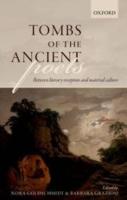
OUP (2018) h/b 384pp £80.00 (ISBN 9780198826477)
This is a delight for both the specialist and the general reader. It presents numerous quirky examples of our connections with dead Greek and Roman poets over the centuries—such as the story of the two 13th C clerics who got into a religious argument with Ovid’s ghost while visiting his tomb in Tomis, or the legend that Virgil dug the tunnel of the crypta Neapolitanahimself with his magical powers.
However, the volume’s main strength is a refusal to be limited by materiality. Some of the tombs in question are—or were—real places in the physical world; but equal consideration is given to fictional or imagined tombs and epitaphs. The intersection of the ‘real’ dead poet and the imagined tomb proves to be a rich area for analysis, drawing on the relationship between the poet’s physical corpus and his literary corpus, and tackling the question of who controls the poet’s commemoration after death. Many of the articles tease out the ways in which dead poets become part of an eternal, virtual community, as poets themselves make connections with their predecessors through their own epitaphs, and as later readers group tombs together to create ‘poets’ corners’, either physical or textual.
The articles are loosely collected into four thematic areas. ‘Material Texts, Textual Materials’ takes on the relationship between tomb and text, with case studies ranging from the well-known Tomb of Simonides to the epitaph, on the Via Salaria, of an 11-year-old boy who died just as he was beginning to acquire a reputation as a celebrity poet.
Part 2 looks at ‘The Poet as Character’, featuring the larger-than-life literary cults of Aeschylus, Orpheus and others. In the third section, ‘Collecting Tombs’ contributors look at ancient Dead Poets’ Societies, in which the graves of poets are drawn together by later fan cultures.
The Tomb of Virgil has been selected as a case study for Part 4, with the four final articles devoted to different aspects of its meaning and presentation—including Silius Italicus’ super-fan purchase of both Virgil’s tomb and Cicero’s estate.
At its heart, this is a book about classical reception, but reception in a form that is both material and highly individualised. It tackles the implications of studying writers who have been dead for thousands of years, and whose presence in death has often been as influential as their activities in life. As the subtitle suggests, it would be of interest to students of literary reception and to students of material culture—and to anyone who would jump at the chance to argue with Ovid’s ghost, or, like Silius Italicus, to own a piece of Virgil.
Cora Beth Knowles
